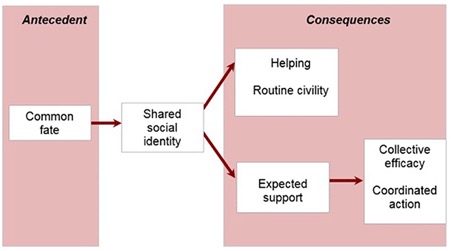Why might the people we care about be at greatest risk?
#COVID19
Physical distancing is antithetical to a basic self-process - the tendency to try to get closer to ingroup members.
@novelli_david shows this in the '2 chairs' experiment, with behavioural measures.
(Read on for moderators of this effect)
onlinelibrary.wiley.com/doi/abs/10.134…

The findings of the '2 chairs' study have been replicated in numerous student projects, and complemented by field studies also showing the tendency to get physically closer to in-group members:
journals.plos.org/plosone/articl…
Findings show that we try to get closer to people when they are ingroup members.
Put differently, as well as maintaining 'personal space', *we seek to share common identity space*
The predictions were derived from self-categorisation theory.
This basic self-process also helps explain findings that:
There is often greater atmosphere in the more crowded locations at events: journals.plos.org/plosone/articl…
We can feel safer in crowded events when we are among in-group members: pnas.org/content/111/25…
The critical role of the self means that regulations around physical distancing need to be expressed in terms of strong identity-congruent norms, to moderate this process of proximity-seeking:
#COVID19
Thus, physical distancing is:
For our greater good
For our public health
For keeping those we care about safe
In line with our values
To support our health and care workers
#COVID19
Researchgate (i.e. free) version of @novelli_david's '2 chairs' study of the identity basis of physical proximity-seeking can be found here:
researchgate.net/publication/26…
#COVID19
Pedestrian flow is shaped by attempts by group members to maintain close distance together as they walk:
royalsocietypublishing.org/doi/10.1098/rs…




